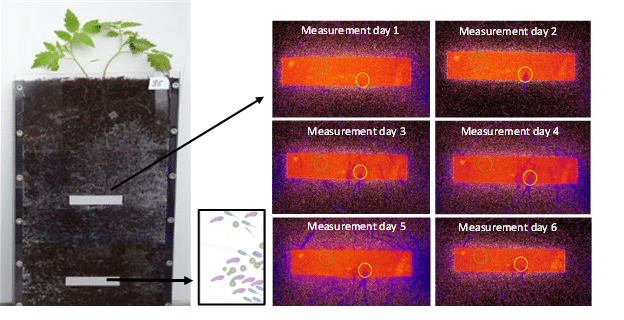
Modification of Tomato Root Architecture, Rhizosphere PH and Root Associated Bacteria in Response to the Nitrogen Source Applied
2Greenyard Horticulture, Belgium NV Skaldenstraat, Belgium
3Laboratory for Microbial Ecology and Technology, Ghent University, Belgium
Crops often show plasticity in their root morphology and physiology to environmental changes that can influence the substrate nutrient availability. Likewise, the application of nitrogen in different forms can lead to chemical changes in the substrate that may affect the biological properties like the abundance of ammonia-oxidizing bacteria (AOB) and nitrite oxidizing bacteria (NOB), organisms responsible for critical steps in the soil nitrogen cycle. Our objective was to measure the dynamic response of plants and root-associated bacteria to the nitrogen source applied.
We compared the effect of an organic source of nitrogen (amino acids) with an inorganic source (struvite) on root architecture of tomato (Solanum lycopersicum). The experiment was conducted in rhizotrons allowing visualization of roots, including planar optodes for non-invasive in situ measurements of pH dynamics in the rhizosphere. Further, the effect of the fertilizers on the bacterial communities’ distribution and activity in both the rhizosphere and the rhizosheat was analyzed by high throughput sequencing analysis.
The fertilizer type had a significant effect on root length and the ratio of primary to secondary roots; secondary root growth in tomato increased under the organic nitrogen treatment. The pH monitoring via optodes revealed that with the organic fertilizer the rhizosheat pH increased from 6.2 to 7.6. This effect reverted over time resulting in pH 6.9 at the harvest point (33 days after sowing). These pH dynamics might be the result of nitrification activities and co-uptake of protons from the substrate when tomato roots take up the nitrate. This is consistent with the low nitrate concentration measured in the substrate at harvest. The measurements of microbial community diversity revealed significant differences between fertilizer treatments and between rhizosphere and rhizosheath. Those results might explain the higher nitrification activity and the highest relative AOB abundance found in combination with the organic fertilizer compared to struvite.

Figure 1: Rhizotron design, indicating the placement of the pH sensor (planar optodes) (left), the microbial community sampling point (area behind the optode) and results of the non-invasive pH measurements during six measurement days in the rhizosphere of tomato plants. The different colours of the roots indicate different pH values (right).
Powered by Eventact EMS